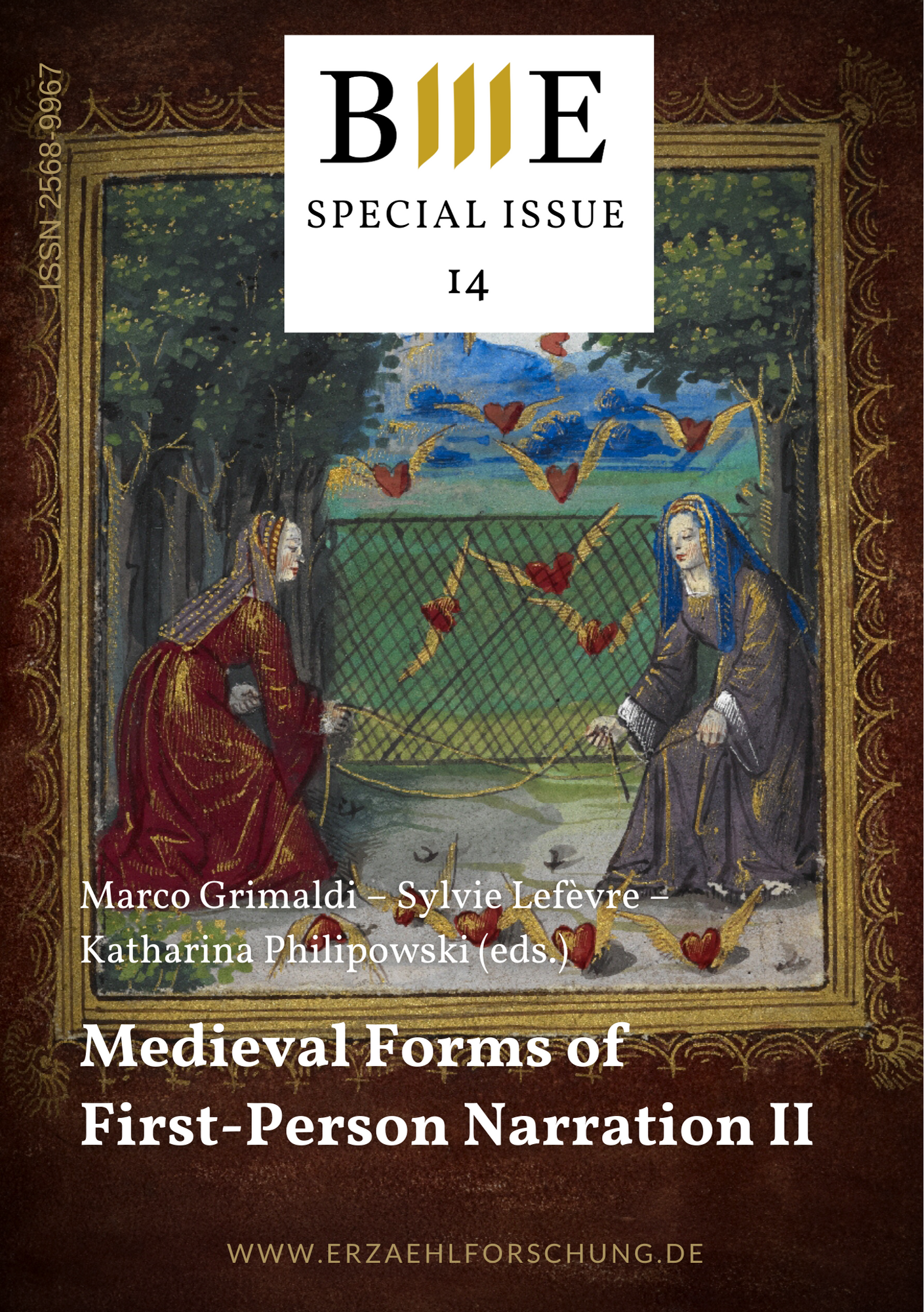Allégorie et narrativité dans la ‹Minnelehre›, le ‹Roman de la Poire› et la ‹Jagd›
DOI:
https://doi.org/10.25619/BmE20225273Abstract
In a comparative approach, the paper examines narrative features of Middle High German and Old French texts belonging to the text family ‹allegorical first-person narratives about love›. Due to their allegoricity, these texts challenge modern narratological concepts of narrativity and diegesis, attesting to highly transgressive structures: action takes place between a loving ‹I› and allegorical personifications, between entities that are not separate individuals but remain intertwined. While agency is frequently shifted from the ‹I› on allegorical personifications, the allegorical form proves to be infectious, touching on parts that initially do not belong to the allegorical realm, not least the ‹I›. This transgressivity goes hand in hand with a temporal porosity – a permanent oscillation between the past and the present tense, conferring a strongly lyrical and performative dimension especially to the ‹Jagd› and the ‹Roman de la Poire›. On a macrolevel, the plots combine linear and iterative or cyclic temporalities that equally point to the lyrical quality of the narrativity. Allegory makes visible that lyrical narrativity, unfolding a ‹story› with actions tending to take place on the level of language and signs, often in the form of semiotic leaps. Finally, the love experience told by the ‹I› in allegorical form can be seen as an experience of language and can be related to the idea of the liber experientiae, attributing to language (and metaphor) a reality of its own. A concept of the texts’ narrativity would have to take into account this alterite understanding of the reality of metaphor, as suggested with the notion of ‹allegorical narrativity›.
Downloads
Veröffentlicht
Ausgabe
Rubrik
Lizenz
Copyright (c) 2022 Julia Rüthemann

Dieses Werk steht unter der Lizenz Creative Commons Namensnennung - Nicht-kommerziell - Keine Bearbeitungen 4.0 International.





